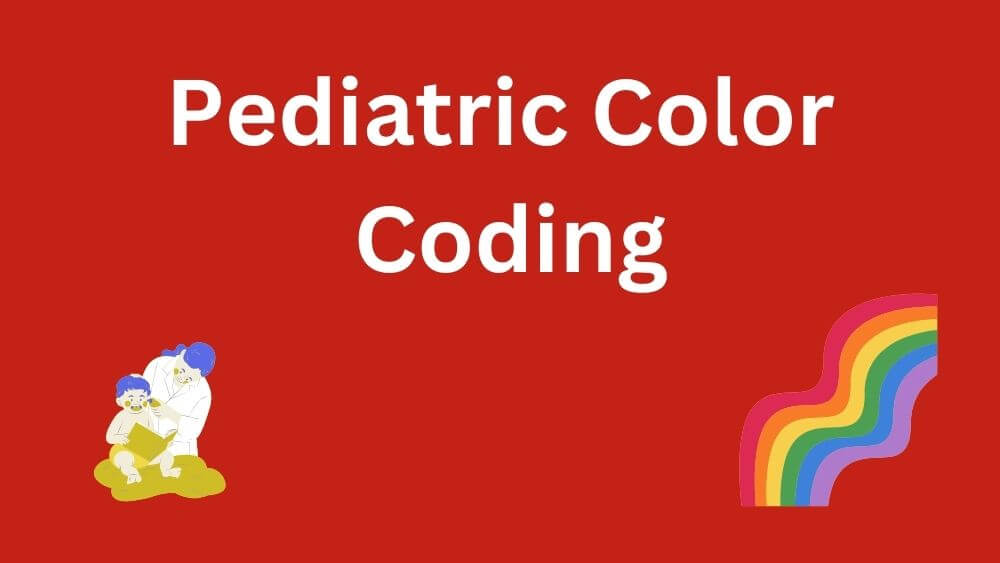Introduction
In the intricate realm of healthcare, precision and clarity are paramount.
Whether you’re a seasoned healthcare professional or a concerned parent, understanding the systems in place to streamline care and ensure patient safety is crucial.
One such system that plays a pivotal role in pediatric healthcare is “pediatric color coding.”

What is Pediatric Color Coding?
Pediatric color-coding is a visual system of categorization using distinct colors to represent different aspects of pediatric care.
This method simplifies processes, enhances communication, and minimizes errors in pediatric healthcare settings.
Here, we delve deep into the world of pediatric color coding, exploring its significance, applications, and frequently asked questions.
The Significance of Pediatric Color Coding
In the fast-paced world of healthcare, especially in pediatric units, precision is non-negotiable. Pediatric color-coding stands as a beacon of clarity in the following ways:
Streamlining Identification
Pediatric color coding simplifies the identification of various elements within healthcare settings. For instance, it helps differentiate medications, equipment, and patient charts specific to pediatric care, minimizing the chances of errors.
Enhanced Communication
Effective communication among healthcare professionals is vital.
Pediatric color coding allows for quick visual recognition, making it easier for the medical team to coordinate and provide the best care for young patients.
Reducing Errors
In pediatric healthcare, even a minor error can have severe consequences. Pediatric color-coding plays a pivotal role in reducing errors related to medication administration, equipment selection, and patient record management.
Applications of Pediatric Color Coding
The applications of pediatric color-coding are vast and encompass various aspects of healthcare:
Medication Safety
Pediatric color coding is often employed to differentiate medications meant for pediatric patients.
This ensures that the right medication is administered in the proper dosage, significantly reducing the risk of medication errors.
Equipment Differentiation
In busy healthcare settings, equipment can be shared between pediatric and adult patients.
Color coding helps healthcare professionals quickly identify pediatric-specific equipment, ensuring appropriate care.
Patient Records
Color coding is also applied to patient charts and records. This assists in organizing patient information, making it readily accessible to healthcare providers, and reducing the risk of misplacing crucial data.
Allergies and Alerts
Pediatric color coding can also be used to highlight allergies, alert statuses, and other critical information on a patient’s chart, ensuring that healthcare providers are immediately aware of any special considerations.
Frequently Asked Questions
Q1: How did the concept of pediatric color coding originate?
The concept of pediatric color-coding has its roots in the need for efficient and error-free care in pediatric healthcare settings. It gained prominence as a part of the broader effort to enhance patient safety.
Q2: Are pediatric color coding systems standardized?
While there are some common color-coding conventions, standards may vary between healthcare institutions. It’s essential to familiarize yourself with the specific color codes used in your healthcare facility.
Q3: Can pediatric color coding be applied to other aspects of healthcare, like pediatric wards?
Absolutely! Pediatric color-coding can extend to the physical layout of healthcare facilities, including pediatric wards. This helps patients, families, and staff navigate the complex healthcare environment more easily.
Q4: How can parents benefit from understanding pediatric color coding?
Parents can play an active role in their child’s healthcare by understanding color codes related to medications, allergies, and equipment. This knowledge empowers parents to advocate for their child’s safety.
Q5: Is pediatric color coding limited to hospitals, or is it used in other healthcare settings?
Pediatric color-coding is not limited to hospitals; it is used in various healthcare settings, including clinics, urgent care centers, and even in-home healthcare.
Conclusion
Color coding serves a vital function in pediatric healthcare, facilitating efficient care, improving communication, and minimizing errors.
By understanding its applications and importance for pediatric patients, healthcare providers, parents, and caregivers alike can contribute to the safety and well-being of pediatric patients – whether as healthcare providers or parents themselves.
Thus, becoming familiar with pediatric color-coding will bring you one step closer to providing better and safer pediatric care.
